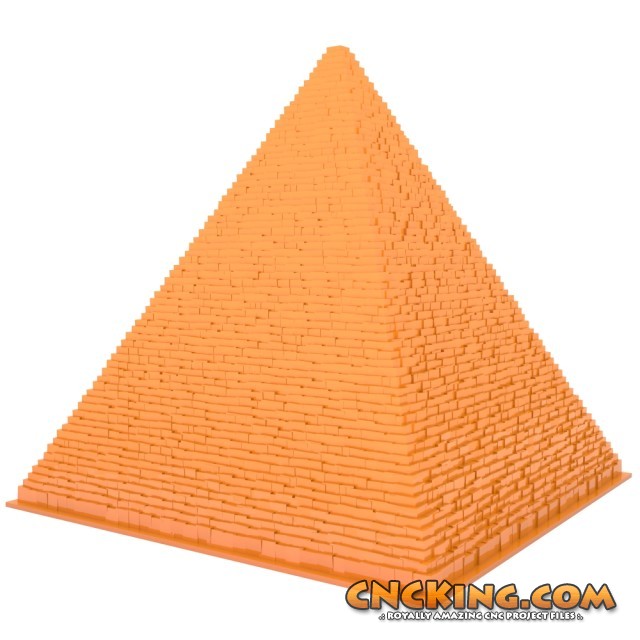FDM Pyramid: Coming Soon!
It has been almost a year since I saw an FDM 3D printer in action live so I’m a little rusty but I built a quick little model to test the capabilities of the 3D Systems Cube when it arrives in a few weeks. My very first model for CNCKing.com (then WoodMarvels.com) was a fish… nothing impressive but learn as you go. No point in developing a crazy cool model that won’t print because I decided to skip ahead too fast.
The major advantage of FDM over other 3D printing technologies is the cost of the printer and material… the major disadvantage is the lack of true supporting material (low-end machines), material warping, overhangs etc. They are nowhere near the limitations though of what I’ve been designing using 2D plywood to make 3D but they also have their own set of circumstances.

With lasers and to a lesser extent, CNC table routers – you are essentially dealing with a 2D plain so a pyramid like the attached model I’m going to build in 3D would be either very complex with about 70 layers of wood one on top the other like my volcano bank (animation below) or simple with 5 flat pieces stuck together. With a 3D printer… no problem!
I designed this pyramid to be 100% hollow or filled with a secret compartment – I’ll try the hollow version FIRST as I’m pretty sure it will work and showcase the 3D printing action best on camera, then the filled-in version with the secret compartment. Should be fun as I have 0.2mm of resolution on the X, Y and Z axis – detail should be pretty sweet!
Where the complexity does happen though with a 3D printer is that if the mesh is screwed-up, has a negative volume or a host of other small issues, the whole thing is scraped, there is no second-chance to fix a first-printed model. You have to go back, look at the mesh and try to fix the issue of which there can be many. What’s worse, some of these issues really can’t be fixed and you have to rebuild the entire model!
As you see, 3D printing is only the END process, you need a foundation in 3D modeling to make anything worth printing… and you need that file that you will mostly buy from CNCKing.com to work – each 3D printer is different but at least I’ll have filmed proof along with photographs of a finished model.
I think I have a distinct advantage here though, coming from 2D –> 3D design world, self-taught no less, I can appreciate the nuances of each CNC type – for instance, you could build this model using a CNC table router but because of the round bit, forget about having sharp inner corners… you could do it with a laser but wow… that’s nuts amount of lasering layer by layer with refocusing about 70 steps all the way down! Each CNC technology has it’s + and – and I hope by outlining my journey through the CNC world, you an also learn from my mistakes so you are up to speed all the faster when you get a 3D printer, table router, laser cutter, plasma cutter or anything else out there!
